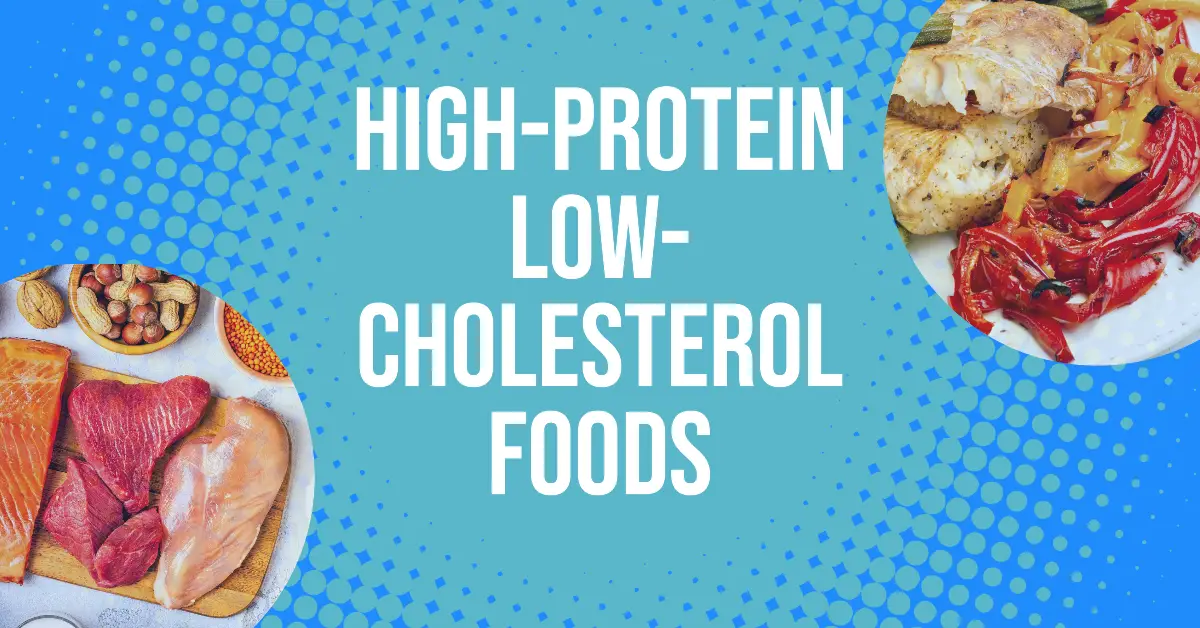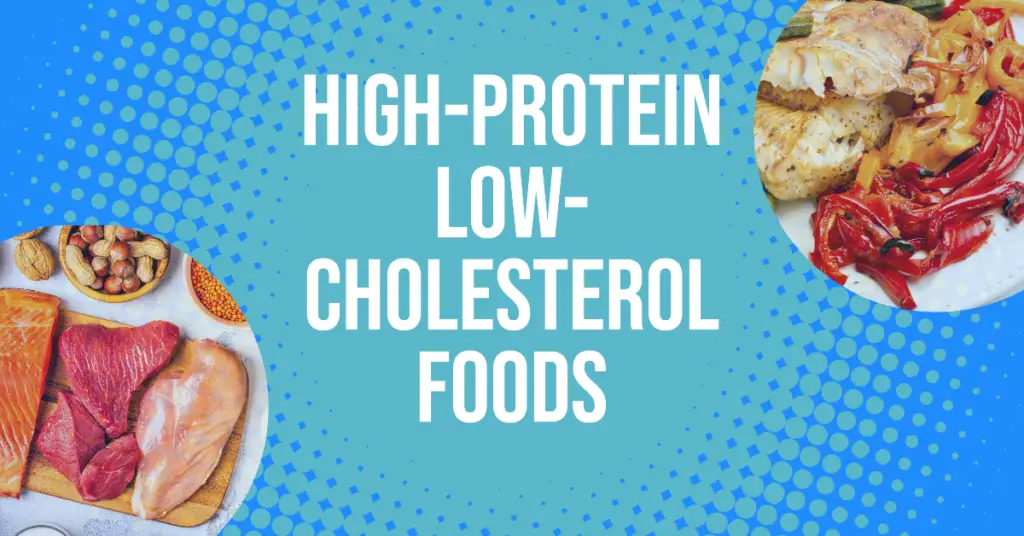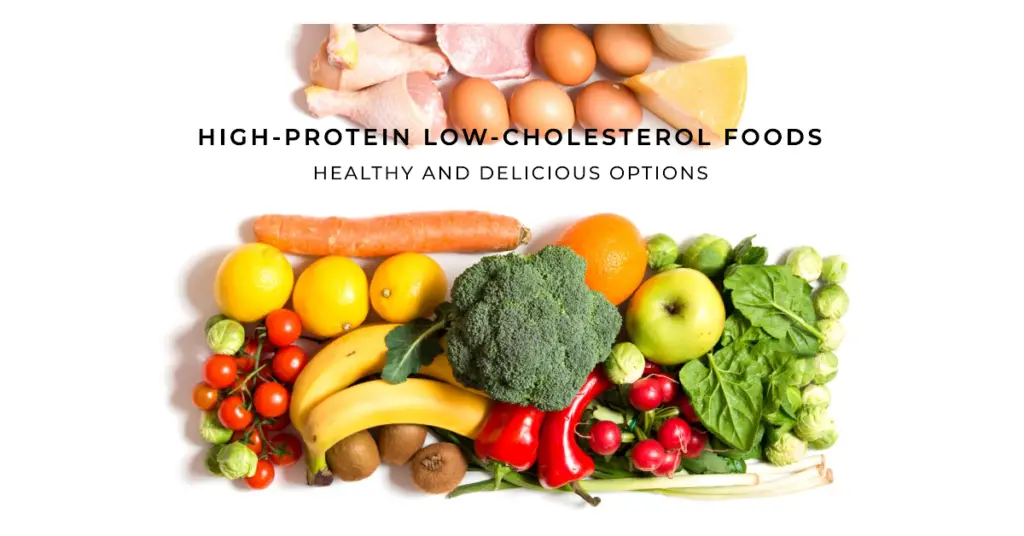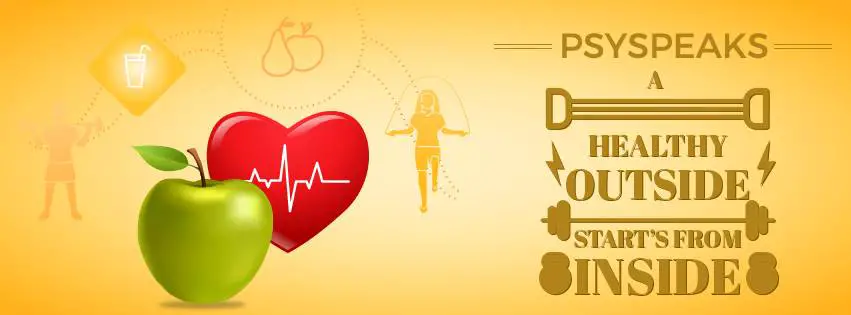
Introduction
High-protein, low-cholesterol foods are a great way to improve your overall health. They can help you maintain a healthy weight, build muscle, and lower your risk of heart disease.
In this article, we will discuss the benefits of high-protein, low-cholesterol foods and provide you with a list of some of the best foods to include in your diet. We will also give you some tips on how to incorporate these foods into your meals.

Benefits of High-Protein, Low-Cholesterol Foods
There are many benefits to eating a diet that is high in protein and low in cholesterol. Some of these benefits include:
- Weight loss: Protein can help you feel full and satisfied, which can help you control your calorie intake and lose weight.
- Muscle growth: Protein is essential for building and maintaining muscle mass.
- Heart health: Eating a high-protein, low-cholesterol diet can help lower your risk of heart disease by reducing your LDL (bad) cholesterol levels and increasing your HDL (good) cholesterol levels.
- Energy levels: Protein can help you maintain your energy levels throughout the day.
- Satiety: Protein can help you feel full and satisfied, which can help you control your calorie intake and lose weight.
List of High-Protein, Low-Cholesterol Foods
Here is a list of some of the best high-protein, low-cholesterol foods:
- Eggs: Eggs are a great source of protein and healthy fats. They are also a good source of choline, which is an important nutrient for brain health.
- Lean meats: Lean meats such as chicken, turkey, and fish are a good source of protein and low in saturated fat.
- Tofu: Tofu is a plant-based protein that is high in protein and low in saturated fat.
- Tempeh: Tempeh is another plant-based protein that is high in protein and low in saturated fat.
- Beans: Beans are a good source of protein and fiber. They are also a good source of soluble fiber, which can help lower cholesterol levels.
- Nuts and seeds: Nuts and seeds are a good source of protein and healthy fats. They are also a good source of fiber and other nutrients.
- Greek yogurt: Greek yogurt is a good source of protein and calcium. It is also a good source of probiotics, which are beneficial bacteria for gut health.
- Cottage cheese: Cottage cheese is a good source of protein and calcium. It is also a good source of casein, a protein that has been shown to help promote satiety.
Other High-Protein, Low-Cholesterol Foods:
Fish: Fish is a great source of protein and omega-3 fatty acids, which are beneficial for heart health. Some good choices include salmon, tuna, trout, and mackerel.
Seafood: Other seafood, such as shrimp, crab, and lobster, are also good sources of protein and low in cholesterol.
Soy products: Soy products, such as tofu, tempeh, and edamame, are a good source of protein and low in saturated fat.
Legumes: Legumes, such as beans, lentils, and peas, are a good source of protein and fiber. They are also a good source of soluble fiber, which can help lower cholesterol levels.
Nuts and seeds: Nuts and seeds are a good source of protein and healthy fats. They are also a good source of fiber and other nutrients.

Tips for Incorporating High-Protein, Low-Cholesterol Foods into Your Diet
Here are some tips for incorporating high-protein, low-cholesterol foods into your diet:
- Start your day with a high-protein breakfast. This will help you feel full and satisfied until lunchtime.
- Add protein to your snacks. This will help you stay full and prevent you from overeating at meals.
- Include protein at dinner. This will help you feel full and satisfied at the end of the day.
- Choose lean meats, poultry, and fish. These are good sources of protein and low in saturated fat.
- Include plant-based proteins in your diet. This is a great way to get your protein without consuming too much saturated fat.
- Cook with healthy oils. This will help you keep your cholesterol levels in check.
- Read food labels carefully. This will help you choose foods that are low in saturated fat and cholesterol.
Tips for Making your Meals Even Healthier:
Cook with healthy oils: Healthy oils, such as olive oil, avocado oil, and canola oil, are a good way to add flavor to your meals without increasing your cholesterol levels.
Season your food with herbs and spices: Herbs and spices can add flavor to your food without adding any unhealthy calories or sodium. Some good choices include garlic, onion, oregano, basil, and thyme.
Add vegetables to your meals: Vegetables are a good source of fiber, vitamins, and minerals. They are also low in calories and fat.
Limit processed foods: Processed foods are often high in saturated fat and cholesterol. Instead, focus on eating whole, unprocessed foods.
Conclusion
Eating a diet that is high in protein and low in cholesterol is a great way to improve your overall health. By following the tips in this article, you can easily incorporate these foods into your diet and reap the many benefits they have to offer.




